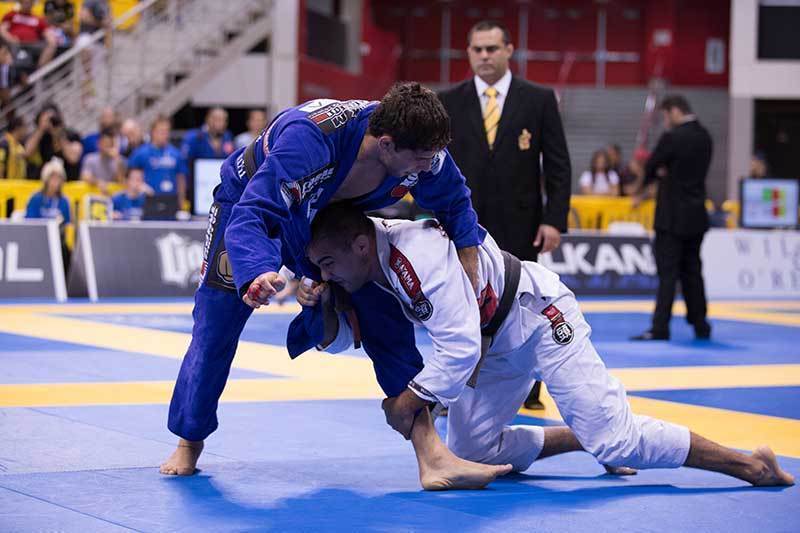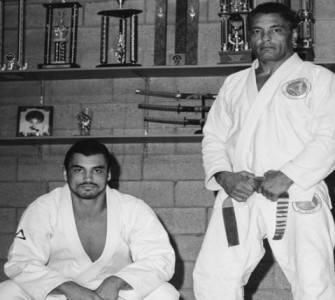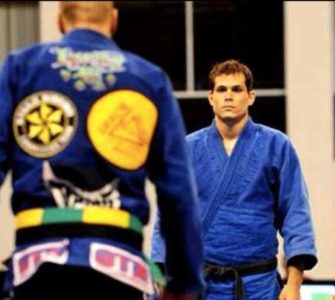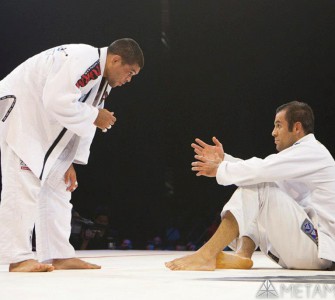A gameplan in a BJJ match is really useful and can make a big difference in the outcome of a match. Many average BJJ players have beaten superior competitors because they had a game plan and stuck to it.
Having well-thought-out plan, having a goal, you avoid the fact of reacting to what your opponent does. You actually impose your game and your will.
To be effective you need to work on putting on a Game Plan that will have set transitions. This is the secret of all the best competitors in the world.
Mastering one position on the ground is never enough, to be a complete fighter you must know how to move effectively from position, always progressing the fight to a better position
Bernardo Faria talks about this here:
The BJJ Engineer laid out the ground rules for setting up a BJJ Gameplan.
“There is no such thing as one gameplan. At the bare minimum you should have 2. One should be a practice gameplan to be executed at class. This is the one in which you will incorporate new techniques you have drilled and will tweak them and polish them on a daily basis until you achieve the results you want. Then these techniques go on to your competition gameplan or your overall jiu-jitsu gameplan (if you don’t compete). The latter gameplan unlike the practice gameplan should be very solid with fewer holes as there is a try and error phase that filters out most of the kinks. You should not change your competition gameplan one month away from an important competition. The practice gameplan should incorporate training objectives.
In a nutshell there shouldn’t be a single practice you come in to the academy without a training objective, a technique, or goal that you wish to achieve or perfect in class.
Examples can be:
- Play Sitting Guard: This will allow me to develop a better guard.
- Play Turtle: It will make my back defense better.
- Play inside the close guard of a very dangerous close guard player: This will make my guard openings and submissions defense much better.
- Don’t get score upon. This will improve my ability to shot other people’s game down.
- just to name a few…
Make sure that your training objectives include your practice gameplan. Make sure that you have a practice game plan written down and you meticulously revised it and adjusted depending on the feedback you get from your training objectives during your class time. For example, say you tried playing Dela Riva, and figure out that the position of the outside leg made a big difference, then this detail it must be added to your gameplan as follows.
If the opponent goes for _________ try De La Riva Sweep.
– make sure to have the leg at this angle to stop him from ________
A gameplan should be very specific and detailed. Only remove the specific details once they have become second nature and too obvious to even write them. I personally prefer to leave them as they serve as useful reminder of the importance of having fine, and detailed technique.
So how do you write a game plan?
Game Plan Template
OPENING Stand Up:
Gi
– establish grips and immediately go for fake Ouchi gari to kouchi gari footsweep / pulls or jump guard. (Not Specific Enough.)
No-Gi
– look for arm drag single or immediately jump to guard—closed if possible. (Meant to get you started.)
ON THE BOTTOM
THE GUARD
Guard objectives:
– submit /take back/ sweep ( prioritize it)
Make sure to prioritize your objective. If your submissions are better than your sweeps, make sure to make submission from close guard a higher priority and attempt things that will enable you to attack with your strength not your weaknesses.
Gi Guard Series
– Write down the sequence of move you plan to attempt on your opponent (be specific) use arrows to help you visualize the flow. i.e.: – attempt bump sweep to threaten kimura- look for triangle when the guy defends.
No-gi Guard Series
Make sure to also use “if” to account for all the things your exponent my expose you to
“if opponent is _______”
I will do _____
“if opponent is _______”
I will do _____
A game plan is really like an algorithm or computer program ( a loop) in the back of your head that you have memorized, drilled, and internalized until it become second nature. Make sure you have both a gi and no-gi gameplan.
HALF GUARD
Half guard objectives:
– sweep/ submit/ take back/ escape to full guard (prioritize and number it so you know what’s your first option, second, etc…)
Half Guard Bottom Submission Series
Half Guard Bottom Sweep Series
Half Guard Bottom Takeback Series
Half Guard escape to full Guard Series.
The more positions you have thought through in your gamplan the less surprises. Once again be as specific as possible.
ON TOP
THE BACK
Back objectives:
– submit
Grips on the Back
Back Attack Series
HALF GUARD
Half Guard Top Objectives:
– submit/pass/smash opponent/takeback
Half Guard Fundamentals
If there are bad habits that you are trying to get rid of make sure to add them to your gameplan
-Remember to DO
-DONT DO
Write them large so you remember. Little mistakes can always come back to bite you.
Half Guard Attack Series
Half Guard Passing Series
INSIDE THE OPEN GUARD
Objectives of Open Guard Top
– submit/pass/lock down half guard top
Inside the Open Guard (GI)
Inside the Open Guard (NO-GI)
Passing the Open Guard
Finer Details of the Over/Under Pass
etc…”
Learn How To Capitalize On Every Opportunity And Be Three Steps Ahead Of Your Opponent: 5x Black Belt World Champion Is Here To Show You How To Take Advantage Of The Transitions These Are The Secrets And Concepts That All The Best Blacks Utilize.
- Finally learn the invisible Brazilian jiu-jitsu secrets behind one of the trickiest and most technical aspects of the game: transitions.


















